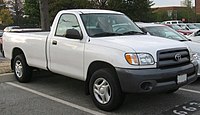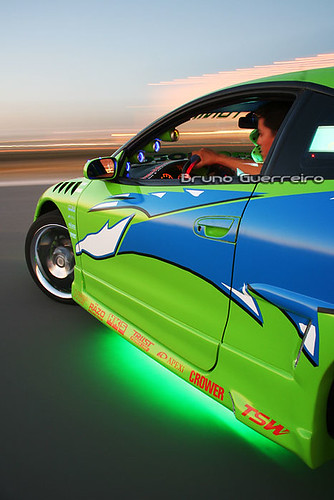 |
The Prius first went on sale in Japan in 1997, making it the first mass-produced hybrid vehicle. It was subsequently introduced worldwide in 2001. The Prius is sold in more than 40 countries and regions, with its largest markets being those of Japan and North America.
According to the United States Environmental Protection Agency, the 2008 Prius is the most fuel efficient car sold in the U.S.
According to the UK Department for Transport, the Prius is tied as the third least CO2-emitting vehicle on sale in the UK and there are eight cars which are more fuel-efficient than it for the combined use cycle.
Feature Between Prius 1.5L 4-Cyl. Hybrid and Prius Touring 1.5L 4-Cyl. Hybrid
| Tuned suspension | |  |  | ||
| 15-in. 6-spoke alloy wheels with P185/65R15 tires | |  |  | ||
| 15-in. 6-spoke alloy wheels with P185/65R15 tires and trim rings | |  |  | ||
| 16-in. 7-spoke alloy wheels with P195/55R16 tires and full wheel covers | |  |  | ||
| Dual color-keyed power outside mirrors | |  |  | ||
| Heated outside mirrors | |  |  | ||
| Aerodynamic multi-reflector halogen headlamps | |  |  | ||
| High Intensity Discharge (HID) headlamps and integrated fog lamps | |  |  | ||
| Washer-linked variable intermittent windshield wipers | |  |  | ||
| Color-keyed front and rear bumpers and door handles | |  |  | ||
| Heavy-duty rear window defogger with timer | |  |  | ||
| Chrome-type finish grille | |  |  | ||
| Electronic rear hatch locking system | |  |  | ||
| High Solar Energy-Absorbing (HSEA) glass | |  |  | ||
| Rear deck spoiler (larger on Touring) | |  |  | ||
| Intermittent rear window wiper |
The 2008 Toyota Prius ranks 9 out of 23 Affordable Midsize Cars. This ranking is based on our analysis of 40 published reviews and test drives of the Toyota Prius, and our analysis of reliability and safety data.
The Prius ranks solidly in the middle of the pack when considered as a hybrid or as a midsize sedan. The Prius's ranking is based on its industry-leading fuel economy, combined with a spacious interior and a standard equipment package that make it competitive as a midsize car, not just a hybrid. However, its styling continues to divide reviewers even after nearly five years on the market, and it sacrifices performance in the pursuit of fuel efficiency. In our hybrid rankings, the 2008 Prius falls behind its corporate cousin, the 2008 Toyota Camry Hybrid, as well as the 2008 Honda Civic Hybrid. Those vehicles don't achieve quite the level of fuel efficiency that drives the Prius's fame, but they also do not suffer some of the performance compromises the Prius makes in pursuit of fuel economy. Little has changed in the Prius for 2008, a car which has not had a major redesign since 2004. One important change for 2008 is the introduction of a "standard" trim which lacks features like heated mirrors and cruise control, but is available at a lower cost than the "base" trim level.






